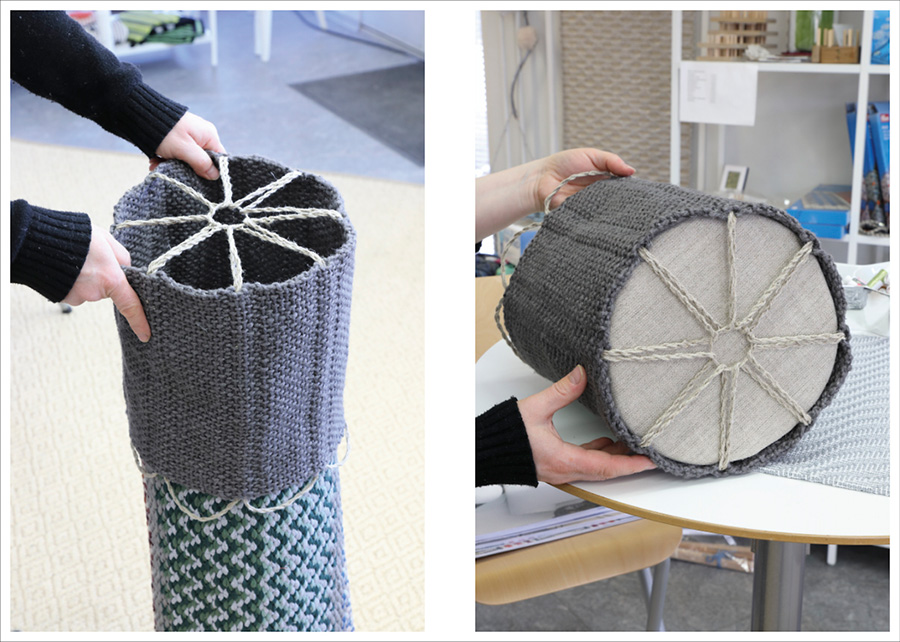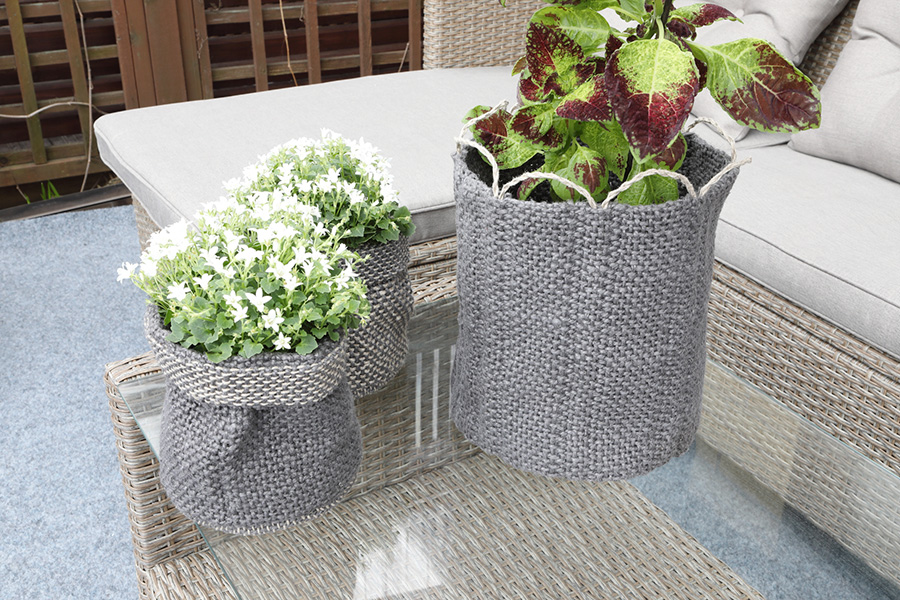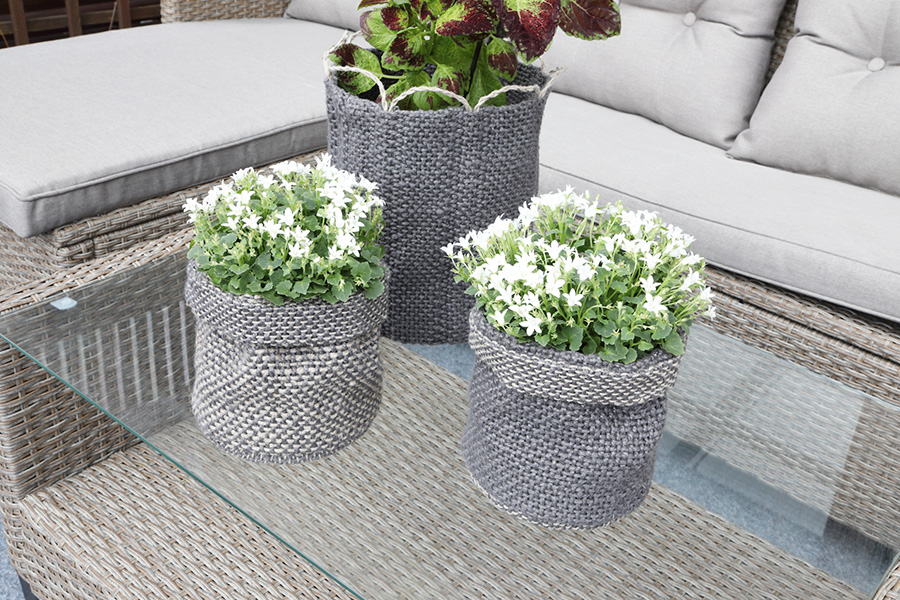The bold plant pot covers are woven of a thick linen cord. You can weave smaller and larger pot covers into the same double weave fabric. The small pot covers are entirely tubular fabric, and the bottom is also woven into the same warp. In a large plant pot cover, channels have been woven into the fabric for strings. The loops of strings decorate the edge and close the bottom. The strings are inserted already while weaving.
You can also use the plant pot cover as a basket.
| The warp | Linen twine, tex 2×1250, 1 kg = aprrox. 410 m, Filona, color grey no 8 |
| Warp | width 27 cm the sett 4 ends/cm number of warp ends 107 length 2,9 m |
| Reed | 2 per dent in a 20-dent reed (metric) |
| Structure | Tubular doubleweave |

Small pot covers / baskets
Height 16 cm, 0 17 cm (inner 0 15 cm)

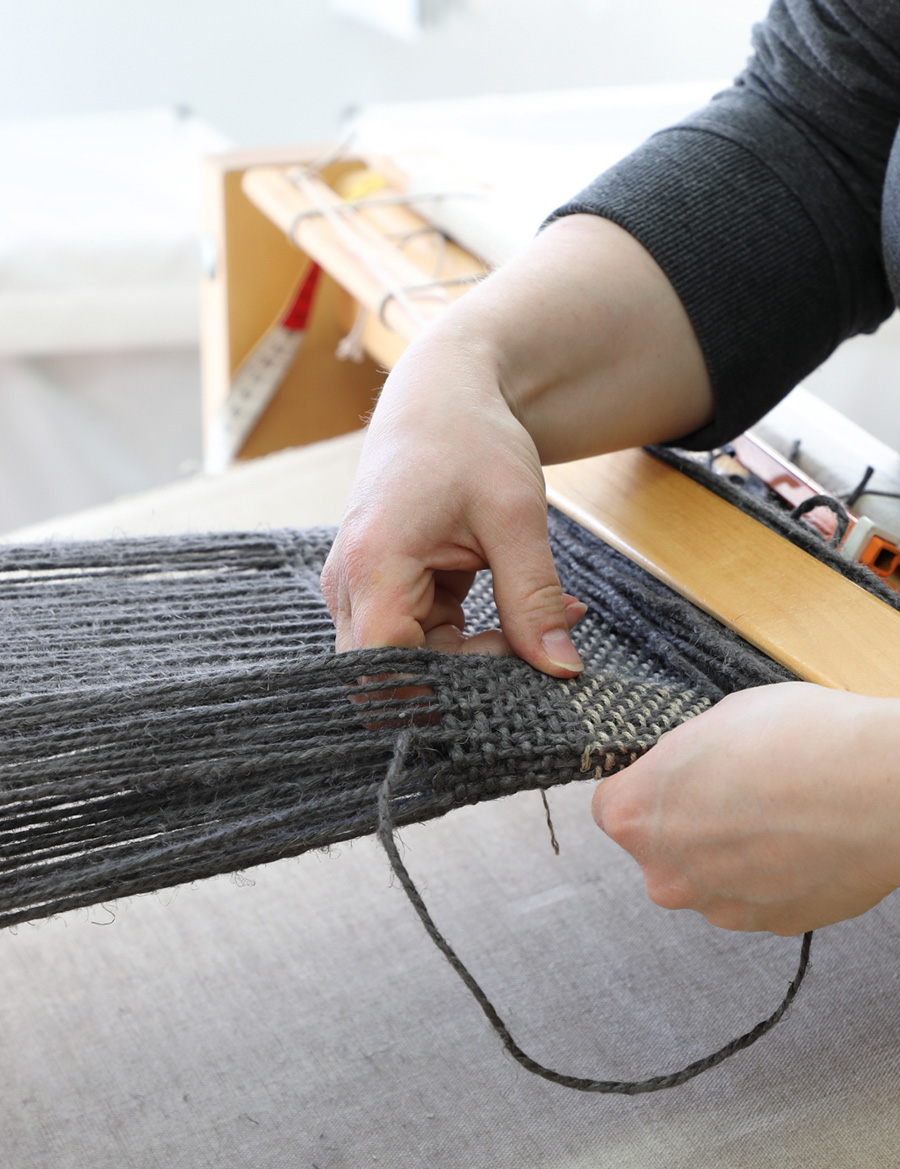
Weaving instructions
Weave tubular doubleweave according to the treadling instructions. Start and finish by weaving 1 cm with extra weft. Also shoot some extra wefts to the ends of the bottom fabric. The extra length helps finishing, as the fabric unravel easily. The sett is 3 picks/cm and 2 picks/cm at hems in one layer of the fabric.
The width of the fabric off the loom was 26 cm.
WEAVE:
6 cm for the hem with Veera linen yarn, unbleached
20 cm for side with Linen twine, grey
6 cm for the hem with Veera Linen Yarn, unbleached
26 cm for the base with Veera Linen Yarn, unbleached
Amount of weft yarn needed
Linen twine, tex 2×1250, 1 kg = n. 410 m, Filona
no 8 grey, another basket no 2 unbleached 55 g
Veera linen yarn, tex 240×2, 1 kg = n. 950 m, Filona
no 2 unbleached 50 g
Sewing the small baskets
Sew a 3-step zigzag to the ends of the bottom fabric and side fabric. Cut the bottom fabric and side fabric apart.
Use the reverse side of the side fabric as the right side, as the sharp edge of the edge is smoother at the reverse side.
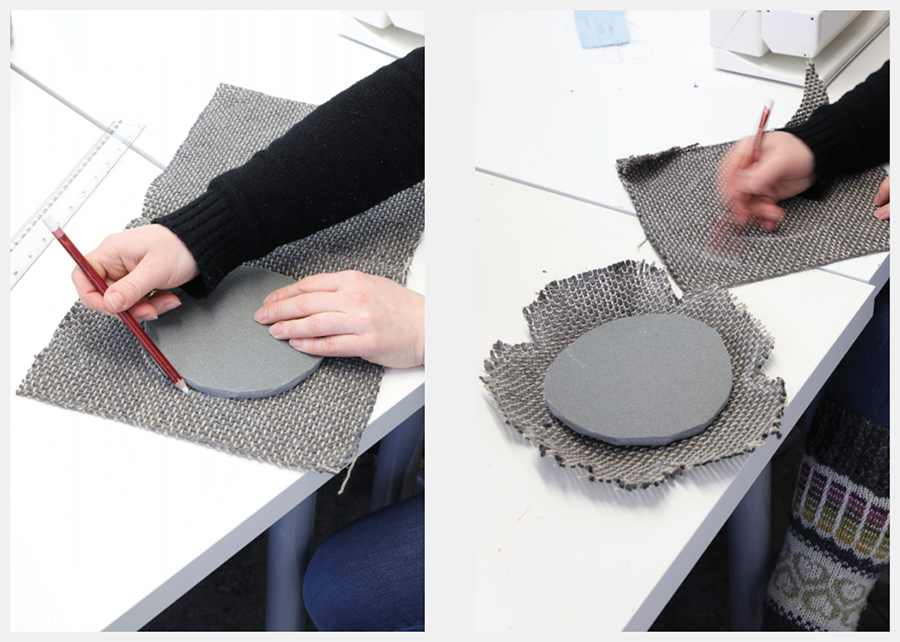
Cut the bottom fabric open from one side.
Cut a round piece of plastic foam with a diameter of 0,5 cm smaller than the side fabric. The cut piece here is 15,5 cm and the diameter of the fabric is 16 cm.
Use the piece to draw 2 circles on the bottom fabric. Add approx. 3.5 cm of seam allowance to the edges of one circle and approx. 3 cm of seam allowance to the other.
Sew a straight stitch on the edge of the piece and cut off.
Draw 5 notchs evenly at the edges of the circle and sew a straight stitch on their edges. Cut the triangles out of the notches.
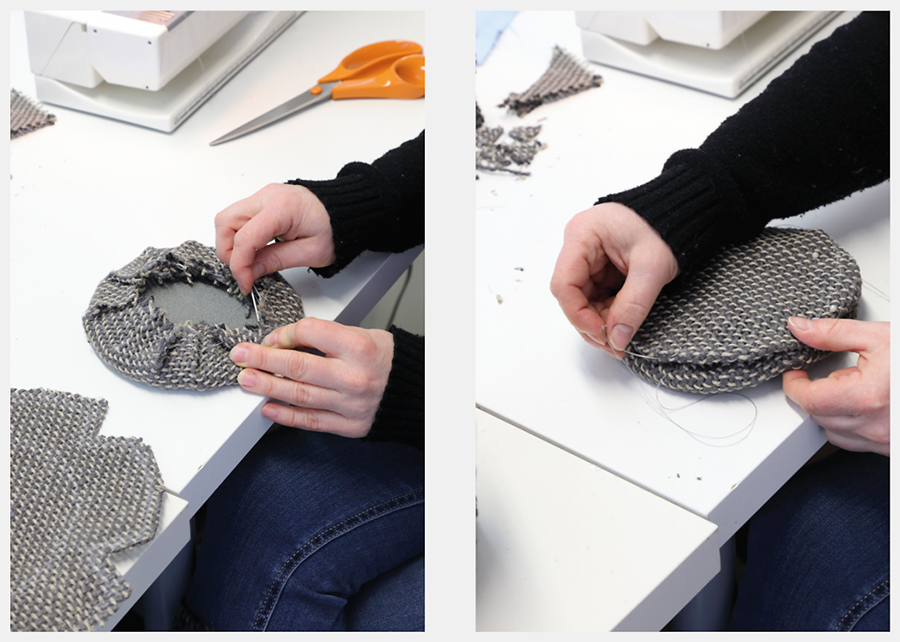
Place the larger fabric under the plastic foam base piece and turn the edges of the fabric over the piece. Sew the edges by hand so that the fabric bends evenly around the base piece. There’s an open spot in the middle.
Fold the seam allowance of the second piece of the fabric to the reverse side. Sew the fabric on the open side of the base piece from the edges.
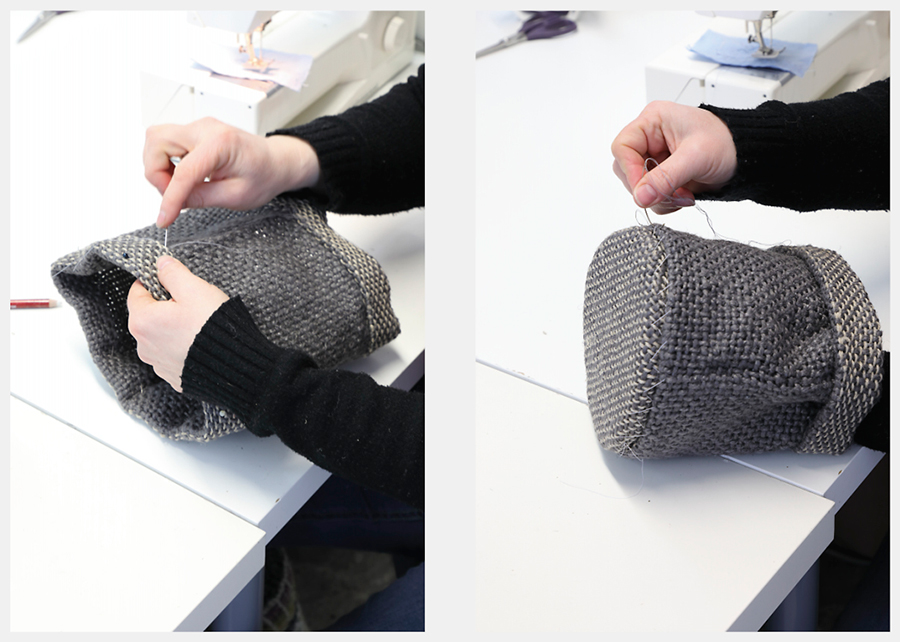
Turn hems completely to the inside and sew by hand. The height of the hem ready is 3,5 cm. Sew with a strong multi-ply linen yarn (for example Line linen 16/2) or double sewing thread in the colour of the fabric.
Sew the side fabric onto the base piece. Sew so that the base piece remains completely visible below the side. Finally, turn the hem to the right side.
Large plant pot cover
Height 26 cm, 0 22 cm (inner 0 21 cm)
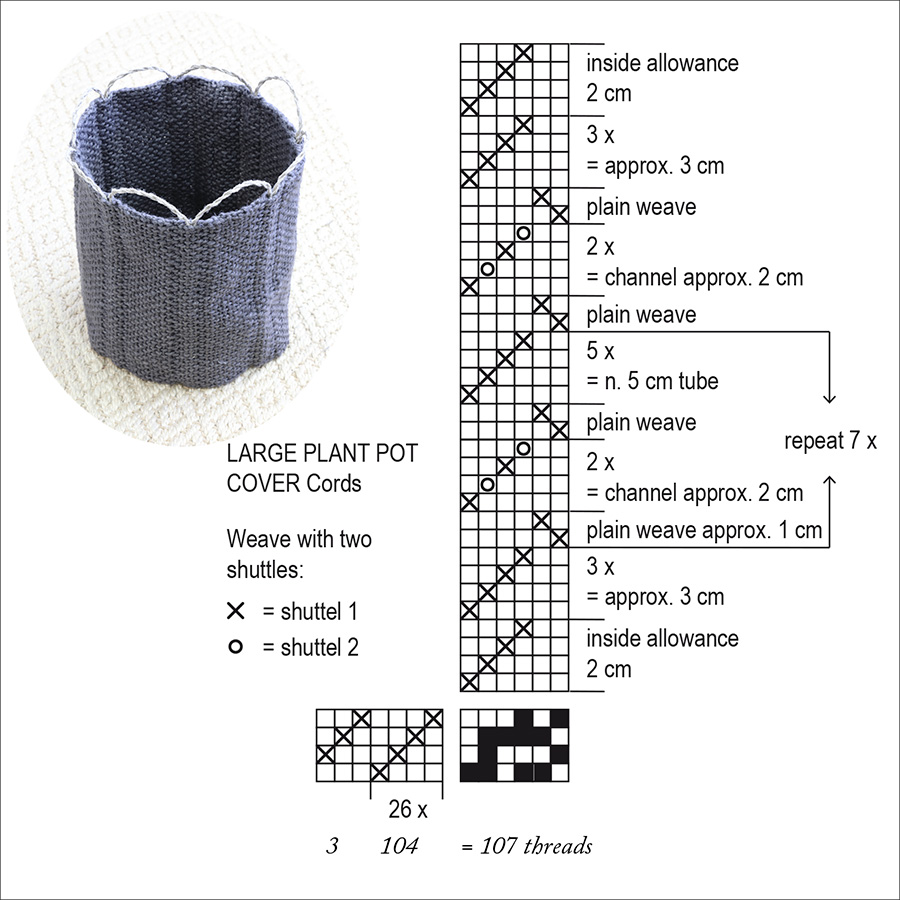
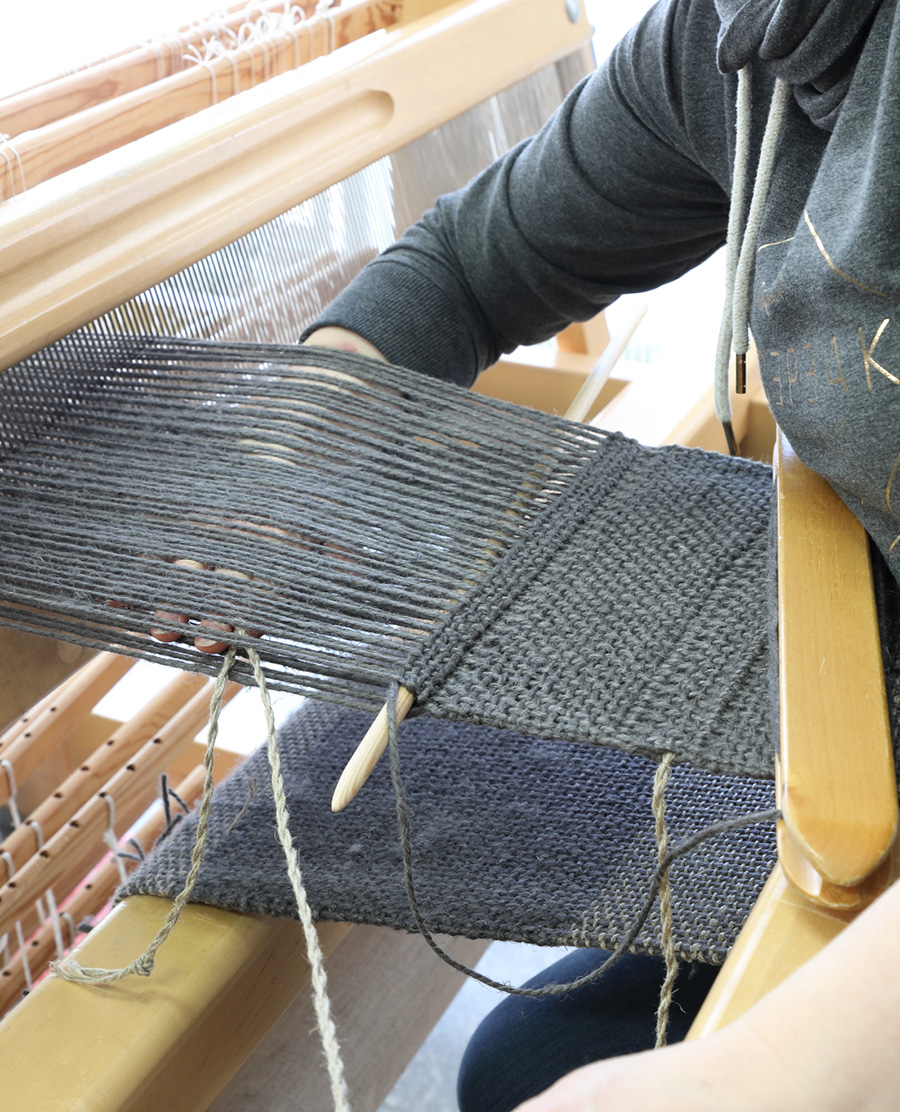
Amount of weft yarn needed
Linen twine, tex 2×1250, 1 kg = n. 410 m, Filona
no 8 grey 150 g
Veera linen yarn, tex 240×2, 1 kg = n. 950 m, Filona
for inside allowance, no 2 unbleached 10 g
+ for the string approx. 30 g (final string 7 m)
Weaving instructions
Weave tube with a channel every 5 cm for strings. Two tabby throws close the tube fabric to form a channel. The channel section is woven with two shuttles to leave open both edges. The strings are threaded into the channel during weaving. See the treadling instructions. The width of the fabric is the height of the pot cover, and the woven length of the fabric is the circumference of the pot.
Make twisted cord of Veera linen yarn before you start weaving. You need a ready-made string approx. 7 meters. Make more than one cord and the processing will be easier. You can join them when weaving and finishing.
Twisted cord: Take two threads and twist them from the ends in different directions into a tight swirl. Hold the string from the middle, tie the ends together and release the other end. Smooth the twisted thread.
N.B! Weave about 6 cm extra length at the beginning and end of the fabric. The shut channel section prevents the tube fabric from opening, which means that the edge of the fabric cannot be finished with a zigzag stitch. The extra part increases the space so that the fabric opens enough, and the sewing is successful.
WEAVE:
6 cm extra length for finishing
2 cm tube with Veera linen yarn for inside allowance
3 cm tube with gray Linen twine
Channel *) = approx. 4 cm with tabby shots
5 cm tube
– Weave by alternating the channel and the tube a total of 7 times and add 1 channel to the end for the balance.
3 cm tube
2 cm tube with Veera linen yarn for inside allowance
6 cm extra length for finishing
The woven length is 73 cm + extra lengths
*) Channel: Shoot two plain weave throws, which close the tube fabric. Weave the channel section with two shuttles to keep both sides open. Place the cords in the finished channel and shoot two plain weave throws that close the channel. Leave arches about 3,5 cm high on one side and about 10 cm high on the other side. The higher arches are tied to the bottom of the pot cover and the shorter ones remain at the top edge for decoration. In finishing, the cords are adjusted to the right length and the strings are knotted together so that the knots remain inside the channels.
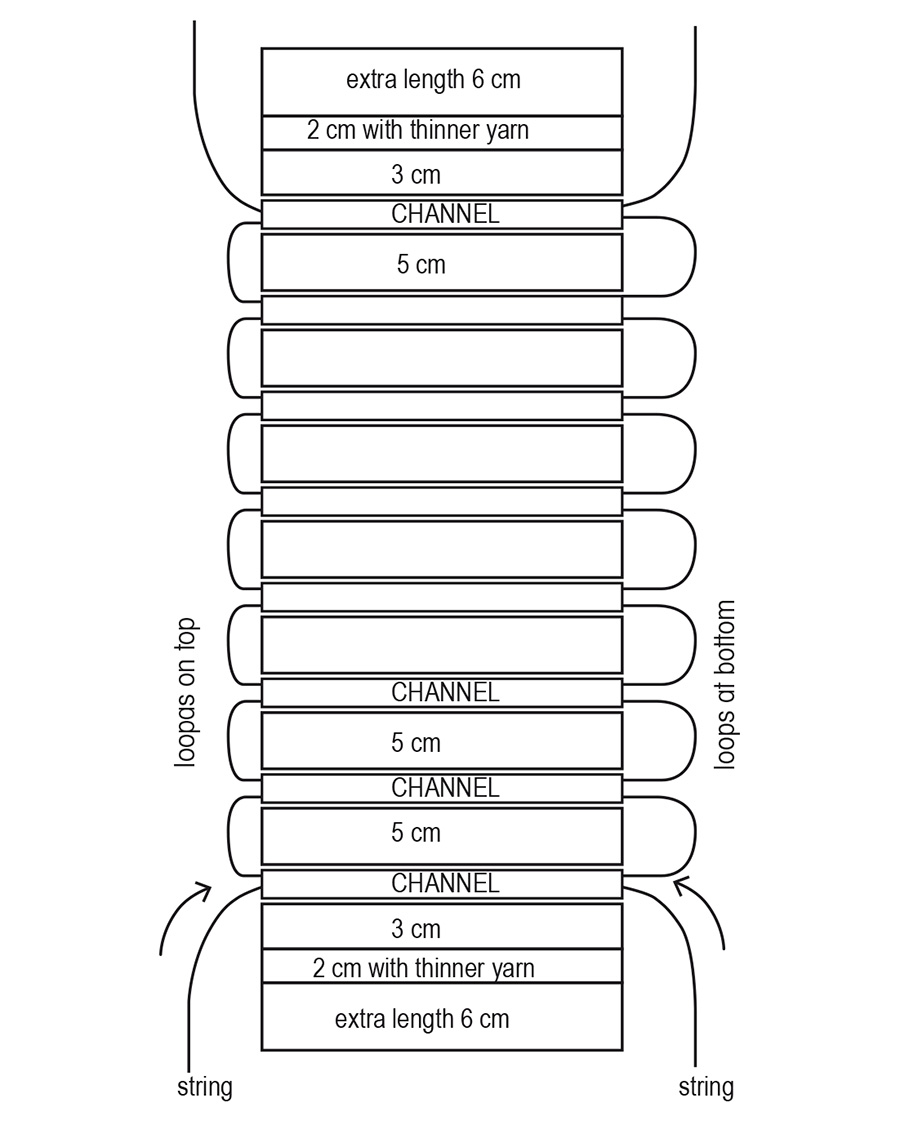
Finishing
Sew a 3-step zigzag to the ends of the fabric. At the ends of the fabric, fold the inner allowance inside the tube. Sew the ends together so you can get a circle.
Position the cord so that small arches remain evenly on the top edge and enough at the bottom edge to connect the arches to the middle of the bottom.
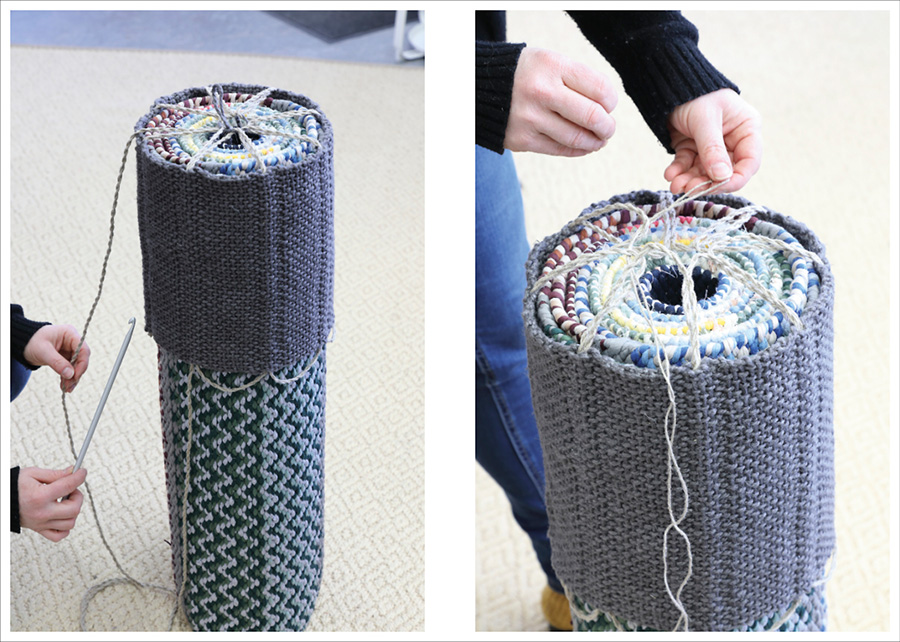
At the bottom, thread the double Veera linen twine through the arches and tighten into the middle and tie into a ring. There’s a little whole in the middle.
You can thread the cord into the channels afterwards with a long hook. However, it is easier to put the cords in the channels already during the weaving.
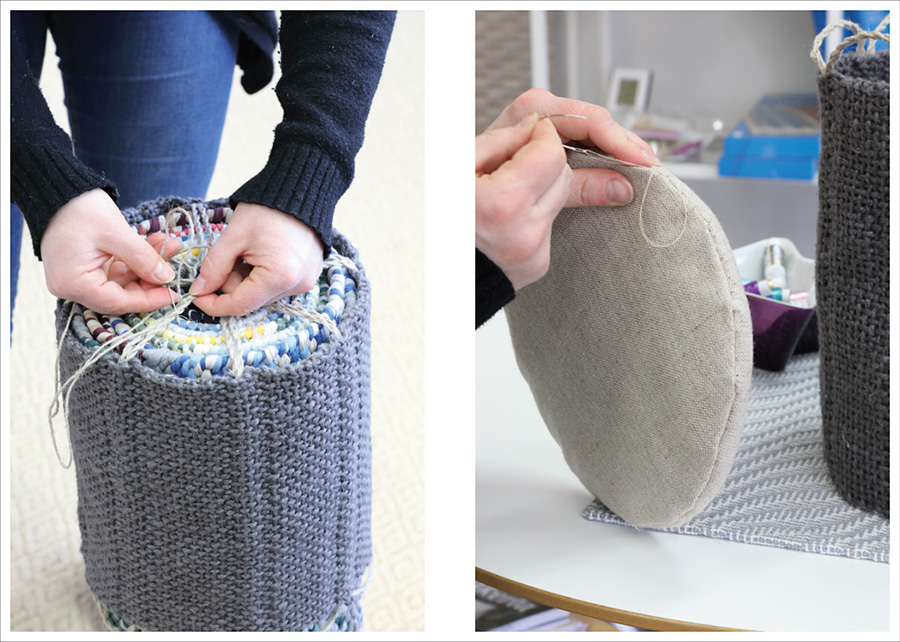
Thread the ends of the linen twine along the cords inside the channels.Sew a bottom piece of linen fabric. The bottom is filled with a plastic foam.
